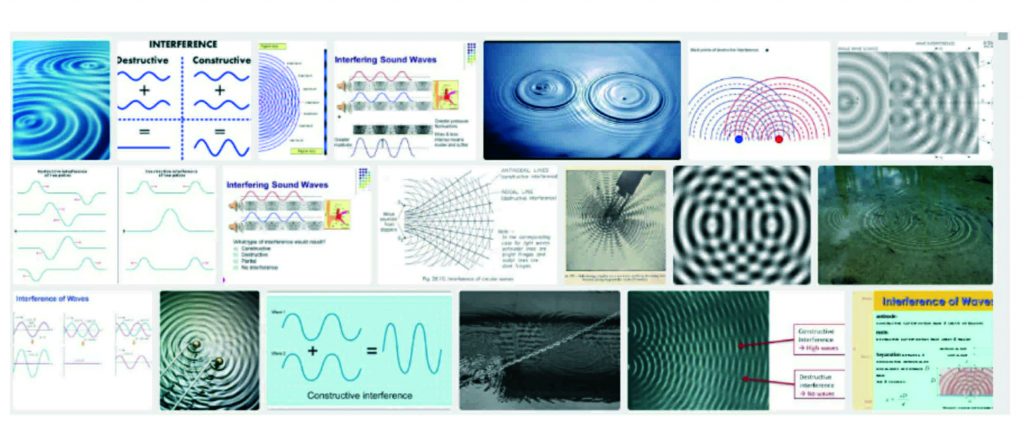An interferometer is a device in which light waves (or other waves, such as radio waves) are superimposed on each other. This superimpostion may cause an interference pattern which can be viewed on a screen, and information can be derived from the nature of the pattern.
If that sounds like heavy physics, read on. It gets easier!
The Interferometer was invented by Albert Michelson for his 1887 experiment. Michelson, a winner of the Nobel Prize, is a name you will become familiar with as you investigate Geocentrism. The problem he had to deal with was how to measure variations in the speed of light rays which had only travelled very short distances. As we all know, light travels incredibly fast, so the only way to do this was to look at how the two waves interfered with each other when viewed together on a screen. He would see images like these:

There’s no need to go any deeper into the science. Wikipedia says:
Interferometers are widely used in science and industry for the measurement of small displacements, refractive index changes and surface irregularities.
And a Google image search of waves interfering with one another brings up countless images like these:

The key point here is that waves do not behave in random ways. If you have ever watched sea waves passing around a rock, or a harbour wall, you may have had the impression of arbitrary motion. But even in that situation, if you watch carefully, you will see definite order in the way they interact. This is the basis of interferometry. It is not necessary to know more detail. Interferometry is well-understood, non-controversial, extremely useful in both industry and scientific research, and was given to the World by Albert Michelson well over a century ago.
